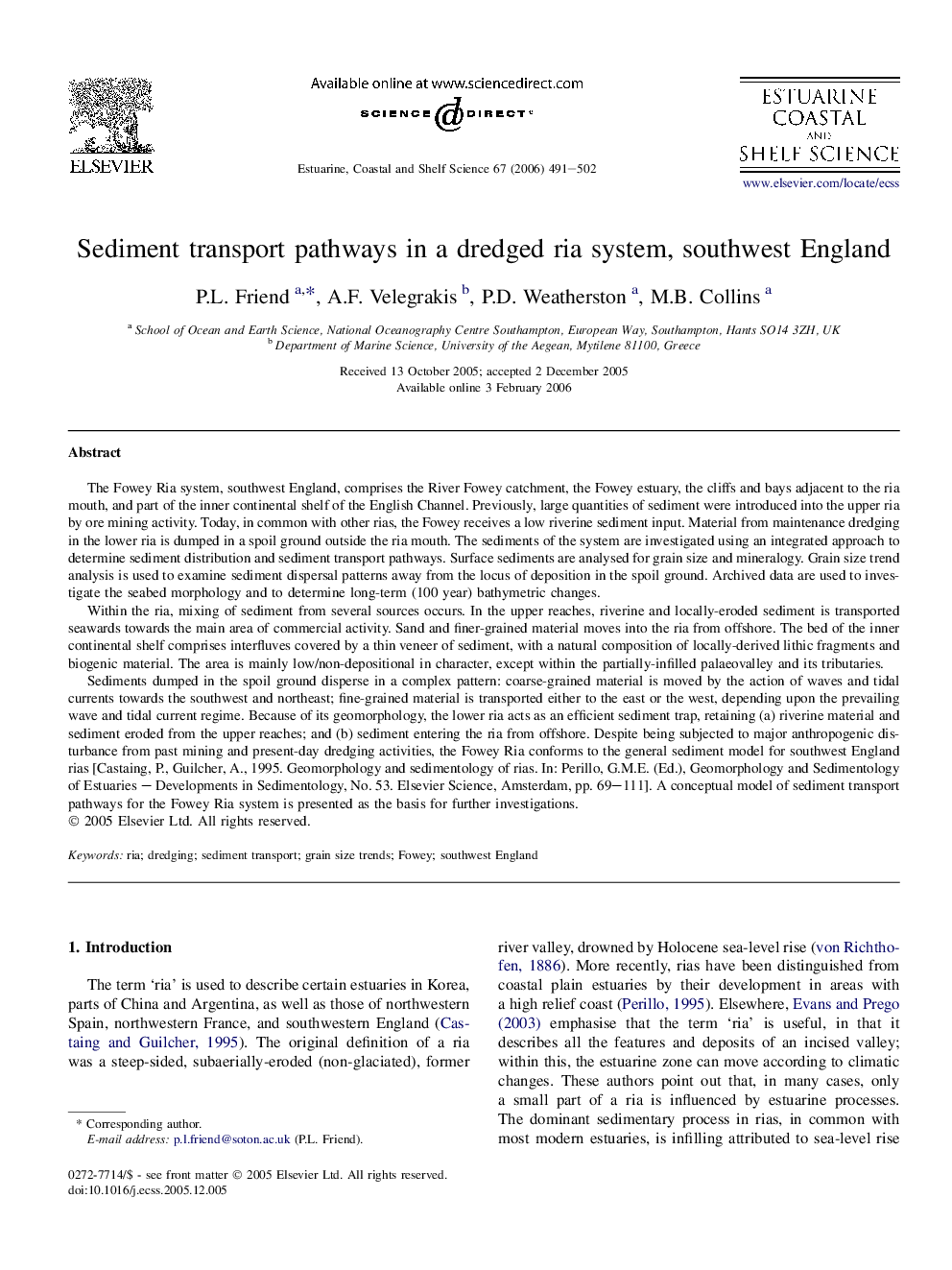| Article ID | Journal | Published Year | Pages | File Type |
|---|---|---|---|---|
| 4542404 | Estuarine, Coastal and Shelf Science | 2006 | 12 Pages |
The Fowey Ria system, southwest England, comprises the River Fowey catchment, the Fowey estuary, the cliffs and bays adjacent to the ria mouth, and part of the inner continental shelf of the English Channel. Previously, large quantities of sediment were introduced into the upper ria by ore mining activity. Today, in common with other rias, the Fowey receives a low riverine sediment input. Material from maintenance dredging in the lower ria is dumped in a spoil ground outside the ria mouth. The sediments of the system are investigated using an integrated approach to determine sediment distribution and sediment transport pathways. Surface sediments are analysed for grain size and mineralogy. Grain size trend analysis is used to examine sediment dispersal patterns away from the locus of deposition in the spoil ground. Archived data are used to investigate the seabed morphology and to determine long-term (100 year) bathymetric changes.Within the ria, mixing of sediment from several sources occurs. In the upper reaches, riverine and locally-eroded sediment is transported seawards towards the main area of commercial activity. Sand and finer-grained material moves into the ria from offshore. The bed of the inner continental shelf comprises interfluves covered by a thin veneer of sediment, with a natural composition of locally-derived lithic fragments and biogenic material. The area is mainly low/non-depositional in character, except within the partially-infilled palaeovalley and its tributaries.Sediments dumped in the spoil ground disperse in a complex pattern: coarse-grained material is moved by the action of waves and tidal currents towards the southwest and northeast; fine-grained material is transported either to the east or the west, depending upon the prevailing wave and tidal current regime. Because of its geomorphology, the lower ria acts as an efficient sediment trap, retaining (a) riverine material and sediment eroded from the upper reaches; and (b) sediment entering the ria from offshore. Despite being subjected to major anthropogenic disturbance from past mining and present-day dredging activities, the Fowey Ria conforms to the general sediment model for southwest England rias [Castaing, P., Guilcher, A., 1995. Geomorphology and sedimentology of rias. In: Perillo, G.M.E. (Ed.), Geomorphology and Sedimentology of Estuaries – Developments in Sedimentology, No. 53. Elsevier Science, Amsterdam, pp. 69–111]. A conceptual model of sediment transport pathways for the Fowey Ria system is presented as the basis for further investigations.
